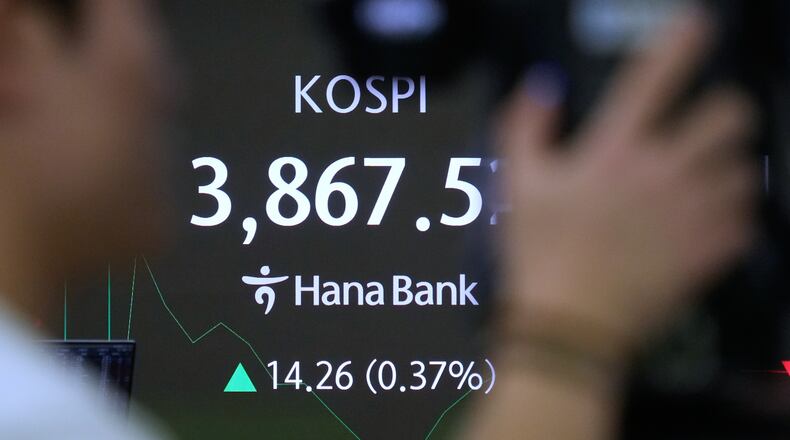BANGKOK (AP) — Asian shares were mostly higher and U.S. futures advanced Monday after Wall Street ended on an upbeat note after much drama last week.
Markets in Japan were closed for a holiday.
Hong Kong’s benchmark, the Hang Seng, rose 1.3% to 25,550.89. It got a boost from a 4.7% gain for e-commerce giant Alibaba, which has reported strong demand for its new Qwen AI app. Alibaba is due to report earnings on Tuesday.
The Shanghai Composite index, one of the few regional markets to decline, fell 0.3% to 3,821.68.
Australia's S&P/ASX 200 gained 1.1% to 8,507.60
In South Korea, the Kospi climbed as technology shares settled after a rough few days of volatility spurred by worries over the craze for artificial intelligence will be sustained.
Taiwan's Taiex added 0.4% and the Sensex in India edged 0.1% higher.
The future for the S&P 500 rose 0.6% while that for the Dow Jones Industrial Average was up 0.3%.
This week, U.S. markets will be closed Thursday for the Thanksgiving holiday, which will be followed by the Black Friday and Cyber Monday retail rushes.
After last week's ups and downs over AI and Nvidia, traders will focus more on “the backbone of U.S. growth, the consumer, whose spending still drives two-thirds of GDP,” Stephen Innes of SPI Asset Management said in a commentary.
Data on the U.S. economy was scarce during the 6-week U.S. government shutdown, leaving investors struggling to parse trends in the economy.
“This makes any sniff of holiday activity — foot traffic, discount depth, card authorizations — disproportionately important. In a data desert, even a puddle looks like a lake,” he said.
On Friday, the S&P 500 gained 1% to 6,602.99 and the Dow climbed 1.1% to 46,245.41. The Nasdaq composite rose 0.9% to 22,273.08. Nearly 90% of stocks in the S&P 500 advanced.
It was a fitting finish for a week that left the S&P 500 just 4.2% below its record but also forced investors to stomach the sharpest hour-to-hour swings since a sell-off in April. The jarring moves are testing investors following a monthslong and remarkably smooth surge for stocks, and they come down to two basic as-yet unanswered questions.
Have prices for Nvidia, bitcoin and other stars of Wall Street shot too high? And is the Federal Reserve done with its cuts to interest rates, which would boost the economy and prices for investments?
Markets took heart from a speech by the president of the Federal Reserve Bank of New York, John Williams, who told a conference in Chile that he sees “room for a further adjustment” to interest rates.
Other Fed officials have argued against a December cut, saying inflation is still too high.
In the bond market, Treasury yields eased Friday on hopes for cuts from the Fed. Traders are now betting on a nearly 72% probability of a December cut, up sharply from 39% a day before, according to data from CME Group. That helped send the yield on the 10-year Treasury to 4.06% from 4.10% late Thursday.
In other dealings early Monday, U.S. benchmark crude oil lost 6 cents to $58.00 a barrel. Brent crude, the international standard, gave up 4 cents to $61.90 a barrel.
The U.S. dollar rose to 156.65 Japanese yen from 156.47 yen. The euro edged to $1.1519 from $1.1516.
Bitcoin was up 3.2% at $87,350. On Friday, it briefly plunged below $81,000 before pulling back toward $85,000. That’s down from nearly $125,000 last month and brought it back to where it was in April, when markets were shaking because of President Donald Trump’s higher tariffs.
Keep Reading
The Latest
Featured



